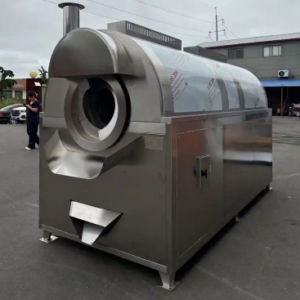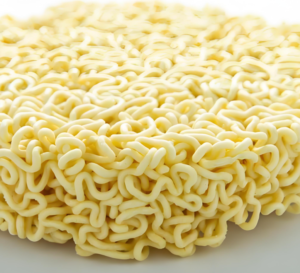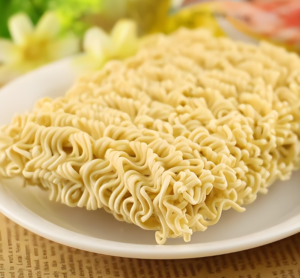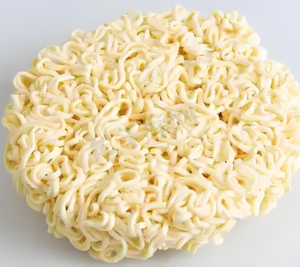<h1>Essential Equipment for Processing Fish Feed</h1>Fish feed processing is a critical aspect of the aquaculture industry, ensuring that fish receive nutritious and balanced diets to promote growth and health. This article explores the key equipment required for producing high-quality fish feed, from raw material handling to final packaging. Whether you’re a manufacturer in the B2B sector or a foreign trade professional sourcing equipment, understanding these tools can optimize your operations and enhance product efficiency.
fish feed extruder
ToggleIntroduction to Fish Feed Processing
Fish feed production involves transforming raw ingredients like fish meal, grains, and vitamins into pelletized or extruded forms that are easy for fish to consume. The process not only improves feed digestibility but also reduces waste in aquatic environments. For B2B professionals, selecting the right equipment means balancing cost, capacity, and quality to meet global demand.
Modern fish feed processing typically includes several stages: grinding, mixing, extrusion, drying, cooling, and packaging. Each stage requires specialized machinery to maintain nutritional integrity and comply with international standards like those from the FAO. By investing in reliable equipment, manufacturers can scale operations and enter competitive foreign markets.
Key Equipment for Fish Feed Production
The core of fish feed processing lies in machinery that handles raw materials efficiently and produces consistent output. Below, we break down the essential equipment categories, focusing on their functions and benefits for B2B applications.
Raw Material Handling and Preparation Equipment
Before processing begins, raw materials must be cleaned, sorted, and prepared. This stage prevents contamination and ensures uniform feed quality. A primary piece of equipment here is the raw material cleaner or screener, which removes impurities like dust and foreign particles.
Grinding mills are another vital component. These machines, such as hammer mills or roller mills, crush grains and other ingredients into fine powders. For instance, a hammer mill operates at high speeds to break down materials, making them easier to mix and improving nutrient absorption in fish feed.
In B2B settings, opting for adjustable grinding mills allows for flexibility in processing different feed types, from floating to sinking pellets. This equipment is often sourced from suppliers specializing in agricultural machinery for foreign trade.
Mixing and Blending Equipment
Once materials are ground, they need thorough mixing to achieve a homogeneous blend. Mixers ensure that vitamins, minerals, and proteins are evenly distributed, which is crucial for the feed’s nutritional value. Ribbon mixers or paddle mixers are commonly used in fish feed production.
A ribbon mixer, for example, uses helical agitators to blend ingredients quickly and efficiently, reducing processing time. In large-scale operations, these machines can handle batches of several tons, making them ideal for exporters targeting international aquaculture markets.
For enhanced precision, some mixers include automated controls for adding liquids like oils or binders. This feature helps B2B manufacturers meet specific client requirements, such as custom formulations for different fish species.
Extrusion and Pelleting Machines
Extrusion is a key step that shapes the feed into pellets or flakes, improving its stability in water. Extruders apply heat and pressure to cook the mixture, killing pathogens and enhancing digestibility. In fish feed processing, single-screw or twin-screw extruders are popular choices.
A twin-screw extruder offers better control over the extrusion process, allowing for the production of floating or sinking feeds. This versatility is essential for B2B traders dealing with diverse customer needs, such as feeds for tilapia or salmon farming.
Pellet mills complement extruders by compressing the mixture into dense pellets. These machines use dies and rollers to form the feed, ensuring uniformity in size and shape. High-quality pellet mills can produce feeds that resist disintegration in water, extending shelf life and reducing waste.
Drying and Cooling Systems
After extrusion or pelleting, moisture content must be reduced to prevent spoilage. Drying equipment, such as rotary dryers or fluidized bed dryers, removes excess water while preserving nutrients. A rotary dryer uses hot air to tumble the feed, achieving even drying without overheating.
Cooling systems follow drying to stabilize the product and prepare it for packaging. Counterflow coolers are effective, as they use ambient air to gradually lower the temperature, preventing condensation and maintaining pellet integrity. For foreign trade, energy-efficient models reduce operational costs and appeal to eco-conscious buyers.
These systems are critical for B2B scalability, as they handle large volumes and integrate with automated lines. Proper drying and cooling also ensure compliance with export regulations, such as those for moisture levels in international shipments.
Packaging and Storage Equipment
The final stage involves packaging the fish feed to protect it from contamination and extend its shelf life. Automatic packaging machines, including bagging and sealing systems, are essential for efficient operations. These machines can fill bags with precise weights and seal them to maintain freshness.
For B2B exporters, vacuum packaging equipment is particularly useful, as it removes air to prevent oxidation and mold growth. This extends the product’s viability during long-distance shipping, a key consideration in foreign trade.
Storage solutions, like silos or automated warehousing systems, complement packaging by keeping feed dry and organized. Investing in these ensures that manufacturers can respond quickly to bulk orders, enhancing their competitive edge in global markets.
Additional Considerations for Fish Feed Processing Equipment
Beyond the core machinery, several factors influence equipment selection and operation. Energy efficiency is paramount, as modern equipment often features variable speed drives to reduce power consumption. This not only lowers costs but also aligns with sustainability goals in the aquaculture sector.
Quality control tools, such as moisture meters and nutrient analyzers, help monitor the production process. These devices ensure that the final product meets industry standards, which is vital for B2B certification and trust-building with clients.
Safety features, including emergency stops and dust extraction systems, are also crucial to protect workers and comply with regulations. In foreign trade, choosing equipment from reputable suppliers with ISO certifications can facilitate smoother exports and partnerships.
FAQ on Fish Feed Processing Equipment
Here are answers to common questions from B2B professionals in the fish feed industry.
What types of extruders are best for small-scale fish feed production?
For small-scale operations, single-screw extruders are ideal due to their lower cost and simplicity. They handle basic formulations efficiently, making them suitable for startups in foreign markets.
How does equipment maintenance impact fish feed quality?
Regular maintenance prevents breakdowns and ensures consistent performance, which directly affects feed uniformity and nutritional value. Neglecting it can lead to product inconsistencies and potential losses in B2B sales.
What should I consider when sourcing equipment for export?
Focus on suppliers offering customizable options, such as voltage compatibility for different regions, and ensure the equipment meets international standards like CE or FDA certifications for seamless foreign trade.
Can fish feed equipment be automated for higher efficiency?
Yes, many modern systems include PLC controls for automation, allowing for precise monitoring and reduced labor costs. This is especially beneficial for large B2B manufacturers aiming to scale production.
What is the average lifespan of fish feed processing machinery?
With proper care, most equipment lasts 10-15 years. Factors like usage intensity and maintenance routines play a key role, so investing in durable models from trusted brands is advisable for long-term B2B operations.
Conclusion
In summary, processing fish feed requires a well-integrated set of equipment, from grinding mills and mixers to extruders and packaging systems, each playing a vital role in producing high-quality feed. By prioritizing reliable, efficient machinery, B2B professionals can enhance productivity, meet global demands, and ensure sustainable aquaculture practices. As the industry evolves, staying informed on the latest equipment advancements will help manufacturers maintain a competitive edge in foreign trade.








